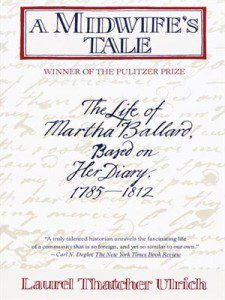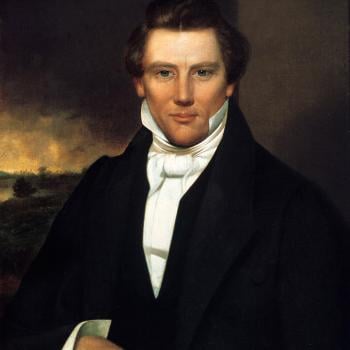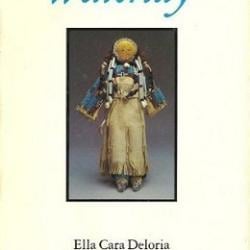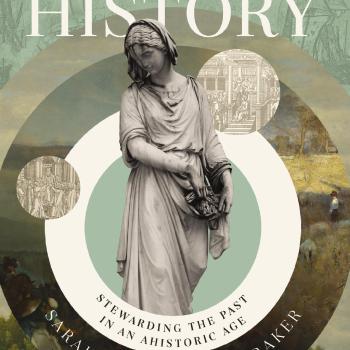Is history an art or a science? History is empirical and creative. We can marvel at both the diligence of archival research (which itself often involves creativity) and at the creativity of a historian who can unlock the past to us in all of its stunning strangeness and similarity. “History … [is] an imaginative creation,” stated the early-twenty-first-century historian Carl Becker.
One might reasonably ask whether biography is the choice of lazy historians. After all, one has an obvious starting point and a finish line. When the subject dies, it’s time for the epilogue. Good biographies will both use the broader historical context to illumine the thoughts and actions of their subjects while simultaneously using their subjects to more fully understand those broader events and trends in culture. Still, the framework does come rather naturally.
This week, I reread Laurel Thatcher Ulrich’s Pulitzer-prize-winning A Midwife’s Tale. I couldn’t help but have Catherine Brekus’s Sarah Osborn’s World in my mind as I returned to the area surrounding the Kennebec River in Maine.
Two biographies of New England women. Sarah Osborn lived from 1714-1796; Martha Ballard was roughly twenty years her junior and died in 1812. Both lived through much of the same history: the splintering of New England, the American Revolution, and the advance of commerce and early capitalism. Sarah and Martha (interestingly, both authors refer to their subjects by first name, something rare in biographies of men, Latter-day Saint leaders excepted) both were incredibly industrious and remained so well into old age and infirmity. Both endured considerable tumult within their families. Both were generous, both with their time and (perhaps especially Sarah) her money. Both, despite keeping extensive diaries (and, in Sarah’s case, having several of her writings published either during or shortly after her lifetime), fell in obscurity.
Sarah wrote extensively about her relationship with God. Along the way, she also discusses her teaching, her poverty, and her relatives. Martha wrote much more sparingly about a much broader range of activity: her hundreds of deliveries, household chores, family relations, and a few legal issues.
Brekus uses Sarah Osborn’s diary to recreate not exactly the world of Newport, Rhode Island (though that emerges along the way), but the world of New England Protestantism as it evolved from Puritanism to evangelicalism and how it intersected the Enlightenment values of humanitarianism, individualism, and empiricism. In Sarah Osborn’s world, God regularly intervenes in sometimes mysterious (and sometimes calamitous) ways, all for the good of human beings in ways they struggle to perceive. Martha Ballard, though neither an evangelical nor a rigorous Calvinist, has similar beliefs about God’s providence. Those beliefs are part of the rich tapestry of Ulrich’s portrait, but what she draws into sharpest relief are the ways that Martha and her relatives navigate the cycles of life: the seasons of the year, the constant births and deaths that continually reshape family relations. She intricately describes those elements of life that occupied women (from planting to washing) and men (town business and, in her husband’s case, work that took him away from the farmstead) and those places where those spheres intersected.
 I found it fruitful to think about their respective religious sensibilities. Sarah is consumed for much of her early adult life with the question of whether or not she has truly experienced God’s saving grace. In later years, she hosts remarkable awakenings at her Newport home in which she attempts to shepherd hundreds of white and black men, women, and children through that experience of conversion. For Martha Ballard, Ulrich writes, “attending church was a pleasant duty, especially if the sermon was well delivered.” The town of Hallowell is riven by religious conflict, between evangelical and non-evangelical Congregationalists and, later, by Methodists, Universalists, and Free-Will Baptists. The old religious order steadily crumbles. This seems to bother Martha Ballard not one whit. She attends church, sometimes more regularly and sometimes less. She evinces a strong belief in God’s providence, especially during times of tragedy and evil. And she was a member of the church. I’m not quite certain what the requirements for membership would have been when she joined (I believe her date of joining is unknown), but presumably she testified to some work of God’s grace in her soul.
I found it fruitful to think about their respective religious sensibilities. Sarah is consumed for much of her early adult life with the question of whether or not she has truly experienced God’s saving grace. In later years, she hosts remarkable awakenings at her Newport home in which she attempts to shepherd hundreds of white and black men, women, and children through that experience of conversion. For Martha Ballard, Ulrich writes, “attending church was a pleasant duty, especially if the sermon was well delivered.” The town of Hallowell is riven by religious conflict, between evangelical and non-evangelical Congregationalists and, later, by Methodists, Universalists, and Free-Will Baptists. The old religious order steadily crumbles. This seems to bother Martha Ballard not one whit. She attends church, sometimes more regularly and sometimes less. She evinces a strong belief in God’s providence, especially during times of tragedy and evil. And she was a member of the church. I’m not quite certain what the requirements for membership would have been when she joined (I believe her date of joining is unknown), but presumably she testified to some work of God’s grace in her soul.
What I love about both books is the creative ability of the authors to turn what are really rather inaccessible diaries into powerful lenses through which we can better understand not only Sarah Osborn and Martha Ballard but the both foreign and familiar worlds in which they lived. Children are born, people of all ages die, men and women conceive children outside of wedlock, men fight with each other and sometimes kill family members, and certain people hold their families together through their persistence and hard work.
When discussing Martha Ballard’s death (she kept her diary until the final weeks), Ulrich quotes from a eulogy delivered in 1739 by Jared Eliot upon the occasion of a midwife’s death. It bears quoting here as well:
She was a person of Humility, Affability, Compassion, and on whose Tongue was the Law of Kindness; Her Ear was open to the Complaints of the Afflicted, and her Hand was open for the Supply of the Needy.
If others were so Unhappy as to divide into Parties, and to burn with Contention, yet she remained’d a Common Friend to all…
She regarded the Poor as well as the Rich…
She denied her self both Sleep and Rest, and spared neither Skill nor Pains for the Relief of those that were Afflicted and Distressed…
Those Mothers in Israel, who are in these Towns usefully imployed as Midwives, will suffer me to Apply those words, Prov. xxi.29, I may say of You, Many Daughters have done Vertuously; but of the Deceased I may say, But Thou Excellest them all.












